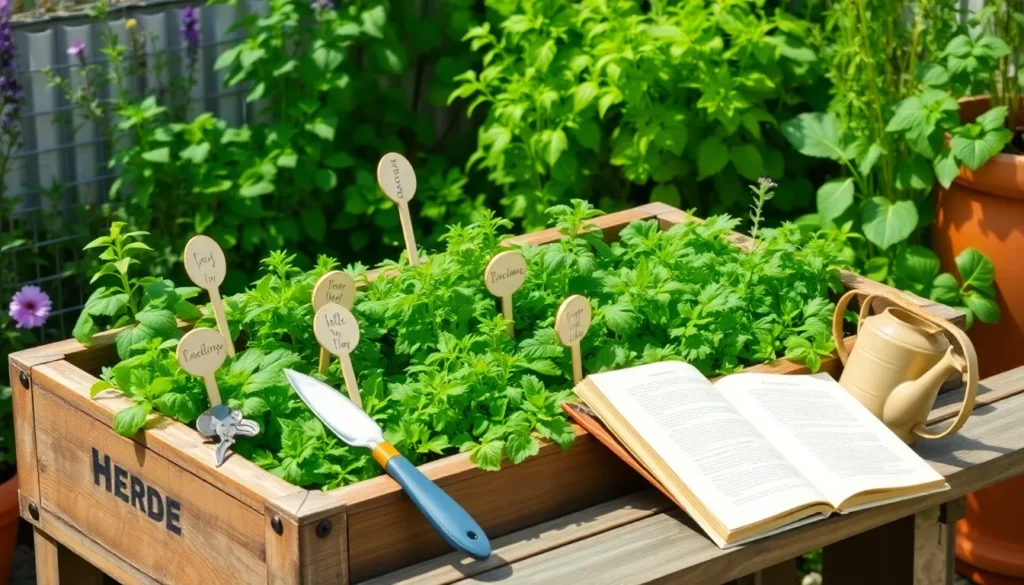Welcome to the world of herb gardening, where the simple joy of nurturing a plant can transform into the delightful experience of enhancing your meals, health, and environment. Whether you’re planting your very first seed or you’re a seasoned green thumb exploring new possibilities, herb gardening offers a rewarding blend of beauty and utility that enriches both garden and kitchen.
In this article, we’ll explore the essentials of starting your own herb garden, focusing on the needs and preferences of those new to gardening while offering fresh insights for the experienced cultivator. You’ll discover how to select the right herbs for your space and climate, understand the nuances of soil and sunlight, and learn the best practices for planting and maintenance.
By the end of our journey, you’ll be equipped with practical, actionable knowledge to cultivate a thriving herb garden that not only pleases the senses but also serves as a sustainable resource for your culinary and wellness endeavors. Join us as we dig into the fascinating world of herbs, where each leaf holds the promise of flavor, fragrance, and fun right at your fingertips.
Choosing Beginner-Friendly Herbs
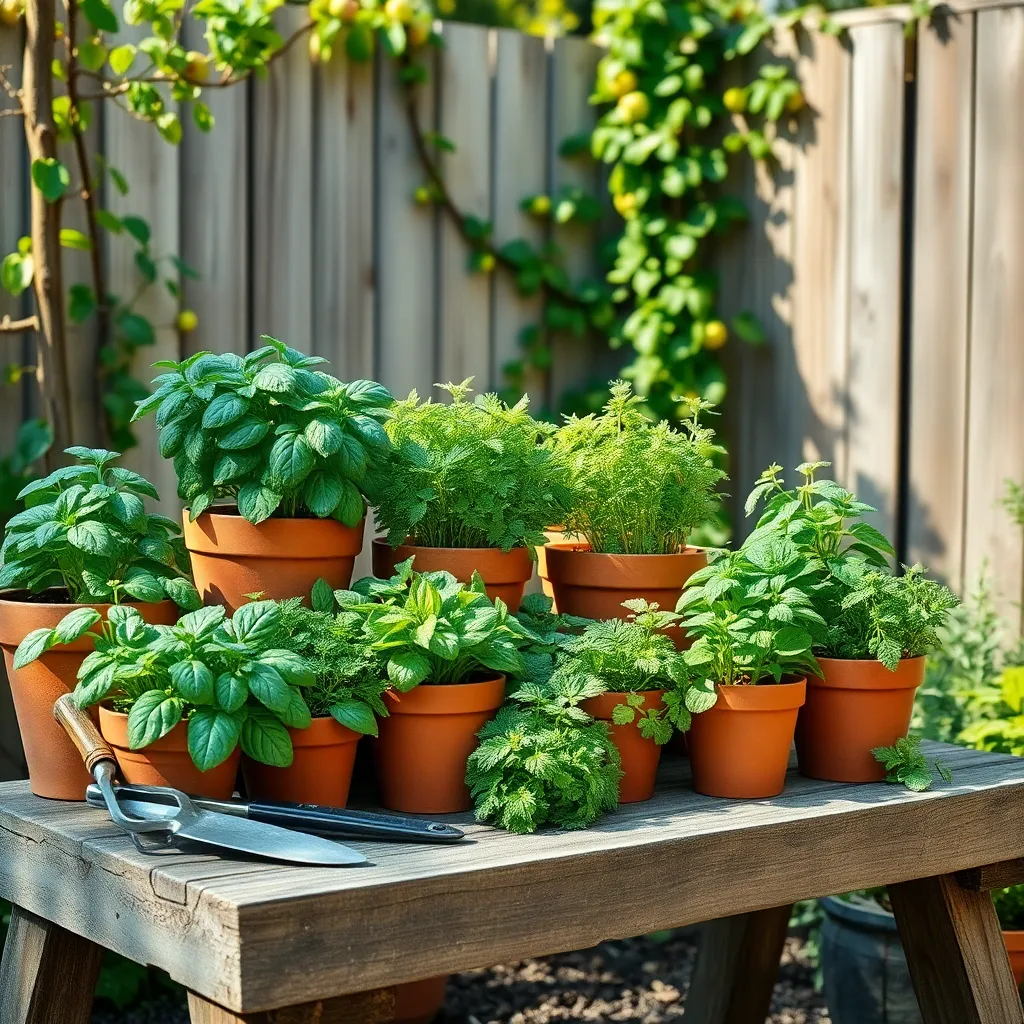
When starting an herb garden, selecting beginner-friendly herbs is crucial for success. Opt for herbs that are resilient and require minimal maintenance, such as basil, mint, and parsley.
Basil thrives in pots or garden beds with well-draining soil and full sunlight. Ensure the soil remains consistently moist, but be careful not to overwater, as this can lead to root rot.
Mint is another excellent choice, known for its hardy nature and rapid growth. Plant mint in a container to prevent it from taking over your garden, and place it in a spot with partial to full sunlight.
Parsley is versatile and can be grown indoors or outdoors, making it ideal for beginners. It prefers rich, well-drained soil and needs regular watering, especially during dry spells to keep the leaves lush.
For those looking to delve a bit deeper, consider trying cilantro, which prefers cooler temperatures and can bolt in hot weather. To extend its growing season, try planting cilantro in partial shade and keep the soil consistently moist.
Essential Tools for Herb Gardening
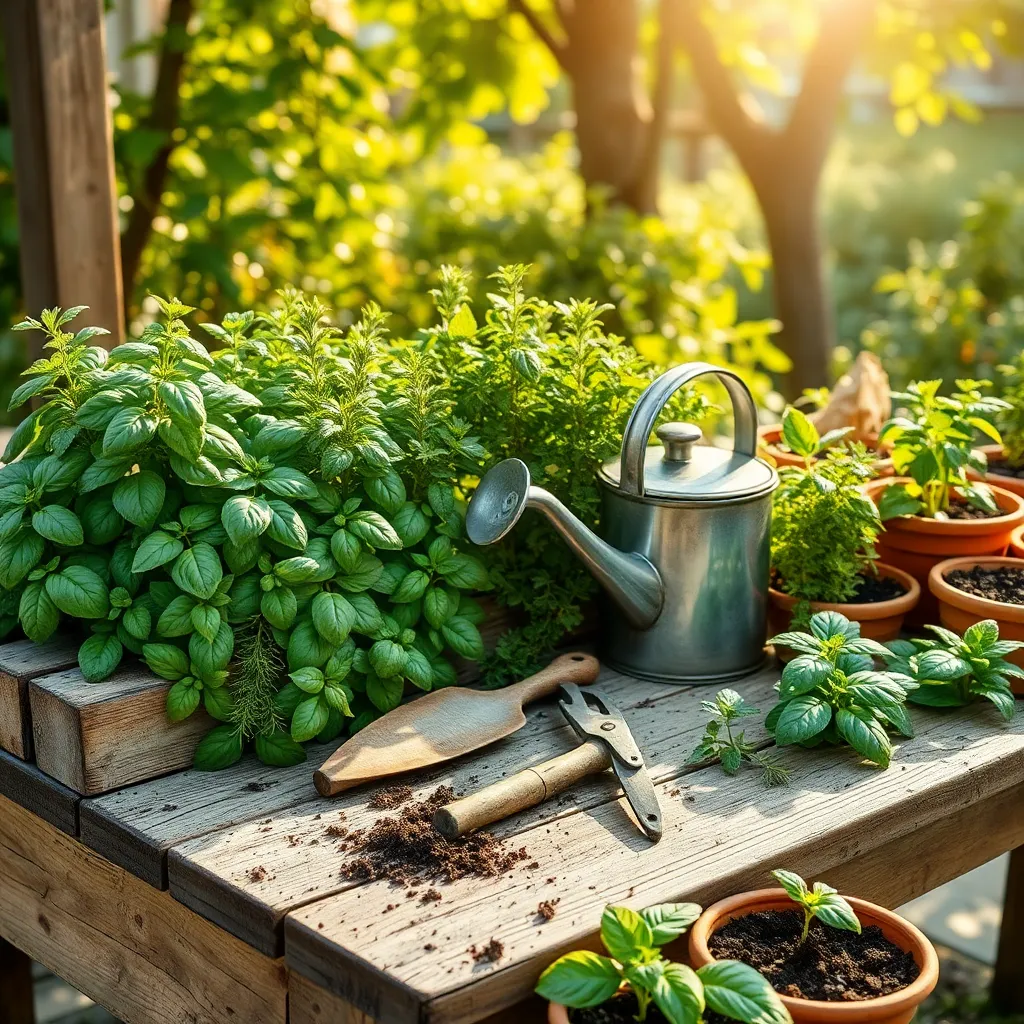
Starting an herb garden requires a few essential tools that make the process smoother and more enjoyable. A good pair of gardening gloves is indispensable for protecting your hands from dirt and potential irritants found in soil.
Another must-have is a small hand trowel, perfect for transplanting herbs and digging small holes. Choose one with a comfortable grip and a sturdy blade to make your gardening tasks easier and more efficient.
For those tricky weeds that can compete with your herbs, invest in a hand weeder. This tool is designed to remove weeds from their roots, ensuring that they do not return after a rainy day.
Regular pruning is crucial for most herbs, so keep a pair of sharp pruning shears on hand. These are essential for trimming your plants and promoting healthy growth, allowing herbs like basil and mint to thrive.
Planting Techniques for New Gardeners
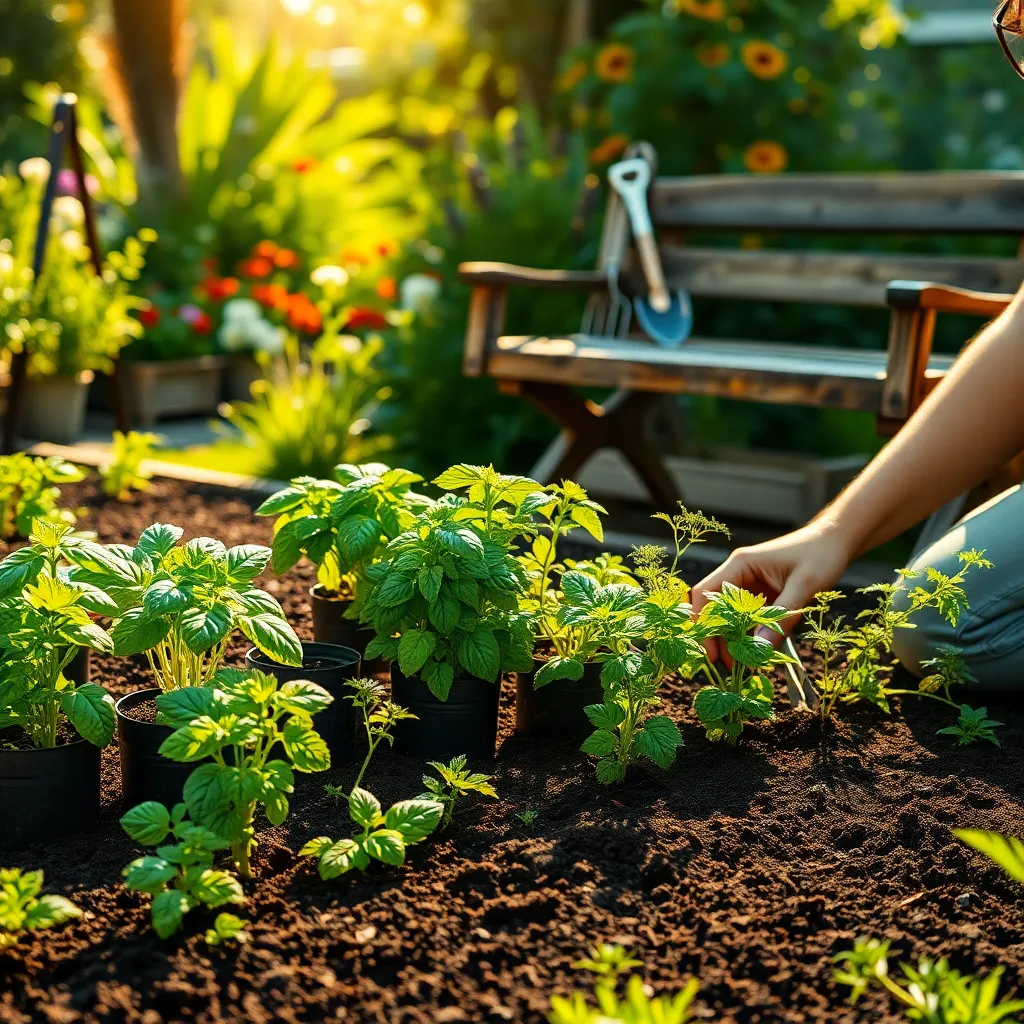
Starting your herb garden begins with choosing the right location. Most herbs thrive in areas that receive at least six hours of sunlight daily, so plan accordingly.
Before planting, ensure your soil is well-prepared. Use a garden fork to loosen the soil, and mix in organic matter like compost to improve drainage and fertility.
When planting herbs, space them according to their growth habits. For example, basil and parsley can be planted closer together, while mint should be given plenty of room to spread.
Water your herbs consistently but avoid overwatering, as most herbs prefer slightly dry conditions. A good rule is to water when the top inch of soil feels dry to the touch.
To promote healthy growth, consider using a balanced, organic fertilizer every few weeks during the growing season. This provides essential nutrients that support robust herb development.
As your herbs grow, regular pruning helps maintain their shape and encourages new growth. Snip herbs like basil just above a leaf pair to foster bushier plants and more abundant harvests.
Caring for Your Herb Garden

To ensure your herb garden thrives, it’s crucial to provide the right amount of water. Most herbs prefer a consistent level of moisture, so aim to keep the soil slightly damp without allowing it to become waterlogged.
Choosing the right soil is essential for healthy herb growth. Opt for a well-draining potting mix enriched with organic matter, as this will provide the nutrients and aeration herbs need to flourish.
Sunlight plays a vital role in the health of your herbs. Ideally, your herb garden should receive at least six hours of direct sunlight per day to promote robust growth.
For those wanting to take their herb gardening to the next level, consider implementing a companion planting strategy. Pairing herbs like basil with tomatoes can enhance growth and deter pests naturally.
Regular harvesting not only keeps your herbs looking neat but also encourages new growth. Use sharp scissors to snip off the top third of the stems, focusing on the leaves you need while encouraging the plant to continue producing.
To prevent common diseases, ensure there’s adequate air circulation around your plants. This can be achieved by spacing your herbs properly and trimming them regularly to avoid overcrowding.
Harvesting and Storing Herbs
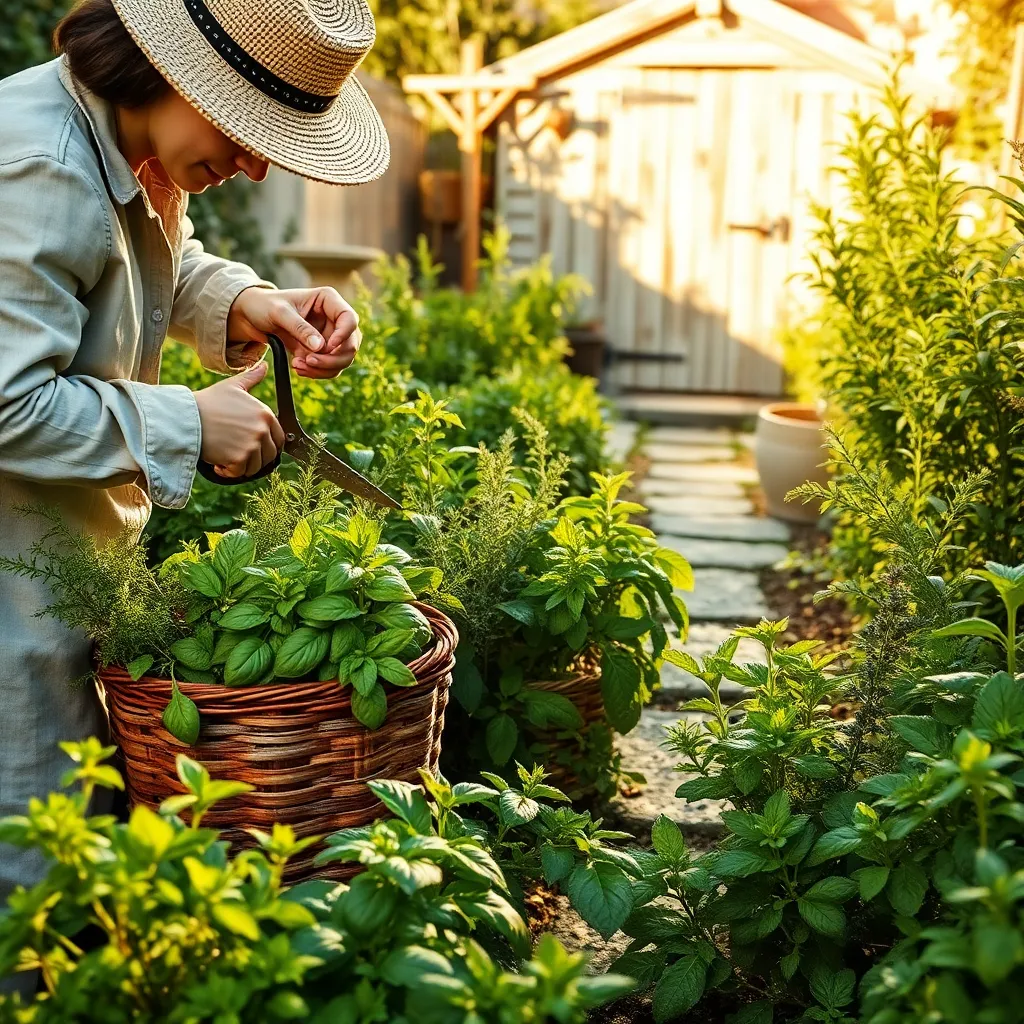
Harvesting herbs at the right time ensures optimal flavor and freshness. For most herbs, the best time to harvest is in the morning after the dew has dried but before the sun becomes too intense.
When you’re ready to gather your herbs, use clean, sharp scissors or pruners to avoid damaging the plant. Cut just above a leaf node to encourage new growth and maintain the plant’s shape.
For beginners, it’s important to know that herbs like basil and mint can be harvested frequently to promote bushy growth. However, avoid taking more than one-third of the plant at a time to ensure it continues to thrive.
Once you’ve collected your herbs, proper storage is key to prolonging their freshness. Tender herbs, such as basil and cilantro, can be placed in a jar of water like a bouquet and covered loosely with a plastic bag.
For longer storage, consider drying or freezing your herbs. To dry, tie small bunches together and hang them upside down in a warm, dry place, ensuring good air circulation.
Advanced gardeners might try preserving herbs by infusing them in oils or vinegars, which captures their essence beautifully. These methods not only extend the shelf life of your herbs but also enhance their flavors for future culinary use.
Conclusion: Growing Success with These Plants
In exploring the nurturing parallels between herb gardening and relationships, we’ve uncovered five key concepts: the importance of patience and nurturing in growth, the need for a supportive environment, the benefits of regular maintenance and care, the power of diversity and understanding in fostering resilience, and the joy of harvesting the fruits of your labor. Just as an herb garden thrives with attention and intention, so do our relationships. As your next step, consider dedicating a few minutes today to reflect on these concepts and identify one small action you can take to nourish your relationships, such as a heartfelt conversation or a simple act of kindness.
Saving this article for future reference will ensure you have a handy guide to revisit these principles and continue cultivating strong, healthy connections. Bookmark it now, and let these insights be your companion on the journey to relationship success. Remember, like any flourishing garden, relationships require time, patience, and love to truly blossom. Embrace this journey with confidence, knowing that each small effort contributes to a more vibrant and fulfilling relational landscape. Together, let’s nurture the seeds of connection for a thriving future.

